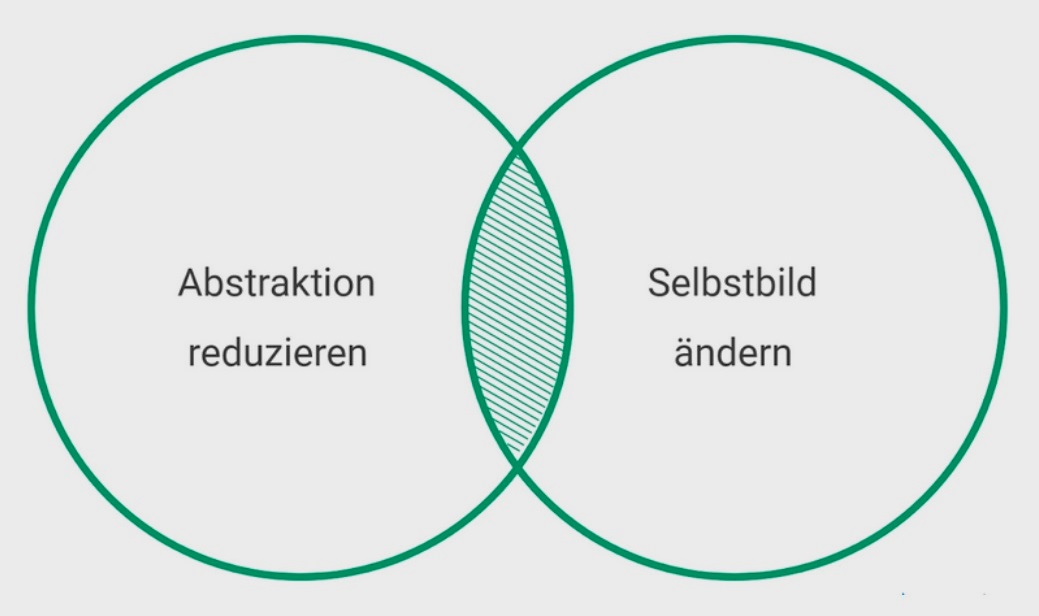



We assumed, that the solution could be found in the overlap of these two circles. We started searching for measures that allowed the customer to understand the products as the consequence of a long and resource-intensive production chain.
Our conclusions from user research and expert interviews lead us to setting a guideline for creating an environment that incentivises a mindful and conscious shopping experience. This decision lead to a number of design choices for our shopping environment.
These measures shared some common conceptual traits, which we distilled into a mission statement. Thus, the underlying principles can be applied in each and every business decision.

Since this resource-intensity can be understood as an externalized cost factor, we created visual equality between these implicit costs and the purchasing price. this is meant to increase conscious reflection in the customer, and to inspire awareness for the consequences of their buying decision.
Furthermore we decided to rearrange the store's assortment to ensure the comparability of products, and to increase clarity, to consciously place causes for thought to increase mindfullness and to implement a simple and clear design language to reduce the confusion of the customer.
